
BY MID-OCTOBER every year our house is brimming with apples and flowing with cider. The apples run the gamut from early season to late, encapsulating the fresh harvest.
There are so many varieties to choose from — well over 300 in New England orchards! — that it’s impossible to taste every one in every season.
Last week I ate a Karmijn de Sonnaville grown at Scott Farm Orchard, Dummerston, Vermont, and a Shamrock from Cold Spring Orchard, University of Massachusetts, Belchertown.
While still relatively new, both apples are hard to find; I had not tasted either one for several years.
Both varieties have unique and compelling features. Together they exemplify the apple’s incredible range in flavors, colors, and textures.
Karmijn de Sonnaville, a Dutch apple discovered in 1949 and released commercially in 1971, has dense flesh and outstanding apple flavor. If you like a hard apple, you will be treated to sublime taste, sweet, rich, and lively.
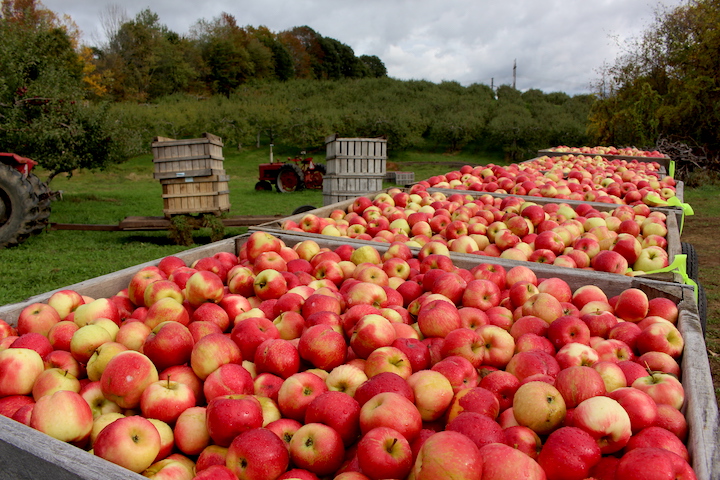
Shamrock, developed in Canada in 1992, is a beautiful green apple with sweet-tart flavor similar to, but distinct from its parent, McIntosh, with a trace of butterscotch at the end.
Though not widely grown now, Shamrock was once described as an “East Coast Granny Smith” for its tart flavor and bright green color.
Neither variety caught on commercially, though, and they are only planted in a few orchards now. Their nondescript names don’t help.
There are dozens more out there just like them: outstanding apples that exhibit some commercial flaw, waiting to be discovered or rediscovered.
They might have forgettable names, be vulnerable to disease or difficult to grow, or produce a crop only every other year. Russeted apples tend to be small, and their dull skin masks their complex flavors.
Some apples discovered in other parts of the world are not yet well-known in the United States. Other varieties are centuries old, valued for their history as much as their flavor.
Among consumers, every variety has its fans. But the popularity of some apples comes and goes.
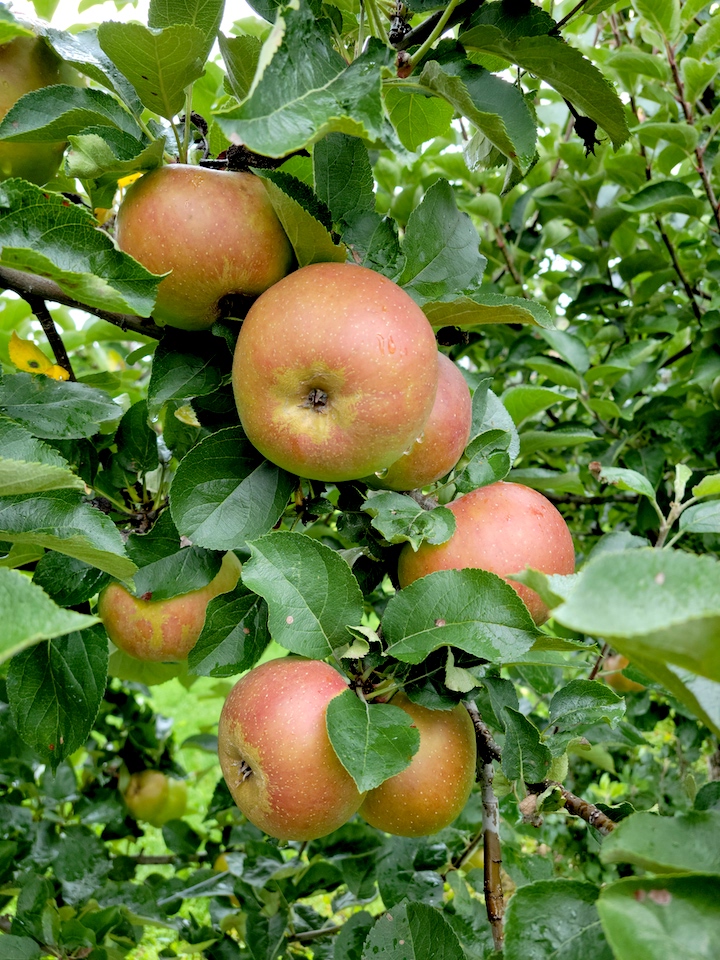
If you come across an apple that you have never heard of before, take a chance! You may be in for a pleasant surprise and deepen your appreciation of the apple.
The Karmijn de Sonnaville and Shamrock joined Cortland, Fuji, Gala, Honeycrisp, Macoun, McIntosh, Pink Luster, Silken, and Stark Jumbo in our refrigerator.
In the coming weeks we’ll be adding to the list such late-season apples as Empire, EverCrisp, Golden Delicious, Jonagold, and Mutsu; heirlooms like Baldwin, Northern Spy, and Roxbury Russet; and anything else we come across!
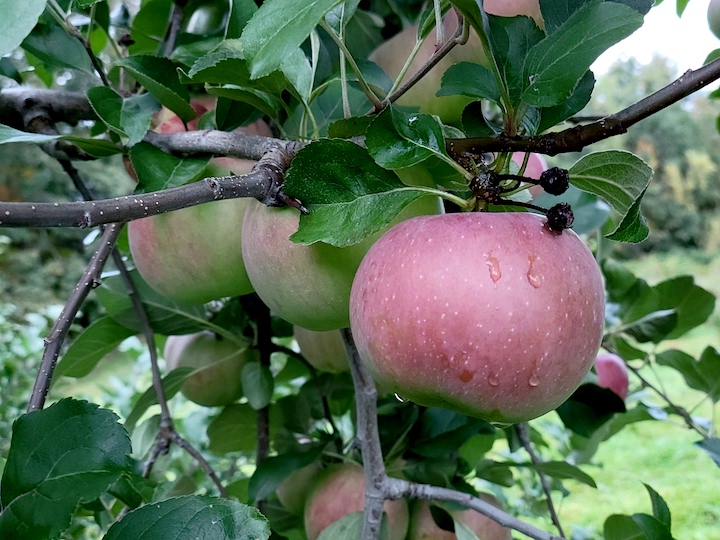
Click on the apple’s or orchard’s name to learn more about it.
* * *
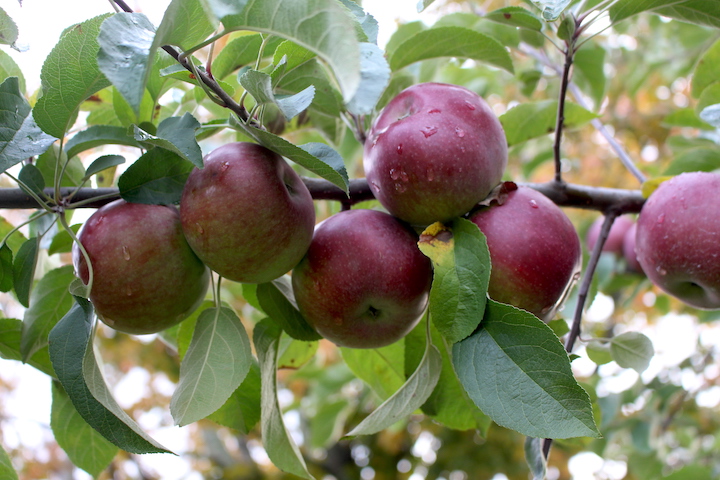
WHILE THE BULK OF THE 2023 CROP has now been picked, there are plenty of apples still on the trees in some orchards — including Gala and McIntosh — and picking will continue throughout October.
Orchard stores, farm stands, and grocery stores are filled with the fruits of the season; there’s no better time to stock up on your favorites or try a new variety.
Use our Orchard Finder to locate an orchard near you, and call ahead to see what’s available.
* * *
APPLESAUCE IS SO EASY to make, and so adaptable.
Applesauce is a naturally sweet topping for waffles and pancakes, ice cream and yogurt, and excellent as a dessert by itself, plain or with added spices like cinnamon.
It can accompany savory dishes like pork.
Applesauce can be substituted for fat when baking.
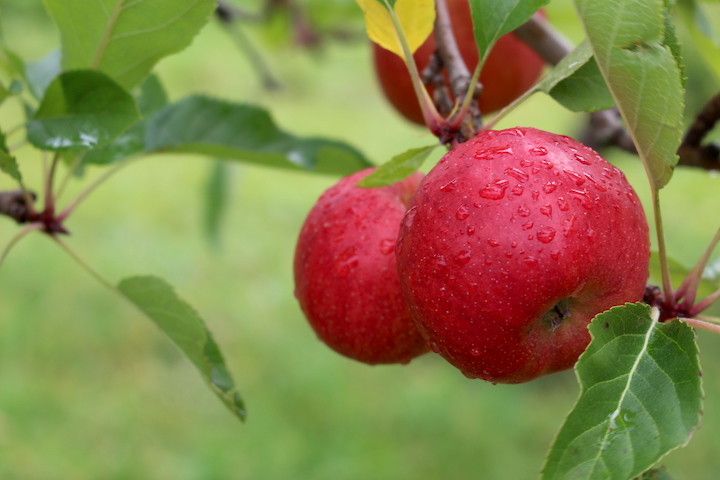
It keeps well in the refrigerator and can be frozen and enjoyed later.
Just throw apples in a pot and gently boil until soft.
With so many apples on hand, it was time to make a batch of this versatile sauce.
I cored and quartered enough large, sweet-tart Cortland and two smaller, sweet apples, Gala and Honeycrisp, to fill a large stock pot, leaving the skins on.
Any variety can be used to make applesauce, the more the merrier. These were just what I had at hand. I made smaller pieces of the Cortlands since they have firmer flesh and take longer to cook.
The Honeycrisp were slightly frozen, but I still threw them into the pot, then added about two cups of fresh cider. I cooked the apples slowly on medium heat, stirring occasionally, until the apples were soft.
Normally I remove the skins from my food mill after mashing the apples into a smooth and uniform sauce. I’ve almost always eaten applesauce that way.
But these apples were so soft that I decided instead to stir them vigorously with a wooden spoon, breaking up the skins and leaving small chunks of apple, after straining the apples with a slotted spoon into a high-sided bowl.
The skins add color and flavor, the soft pieces of apple give the sauce a pleasing texture. I will make applesauce this way again.
* * *
I SAVED THE REMAINING CIDER after straining the apples, and the still-warm, pulpy juice was one of the best apple drinks I have had. The pulp-infused cider was thick and rich with flavor.
It made me wonder if anyone has tried to produce a pulpier cider, with pieces of apple floating through it much like the orange juice loaded with pulp many people prefer.

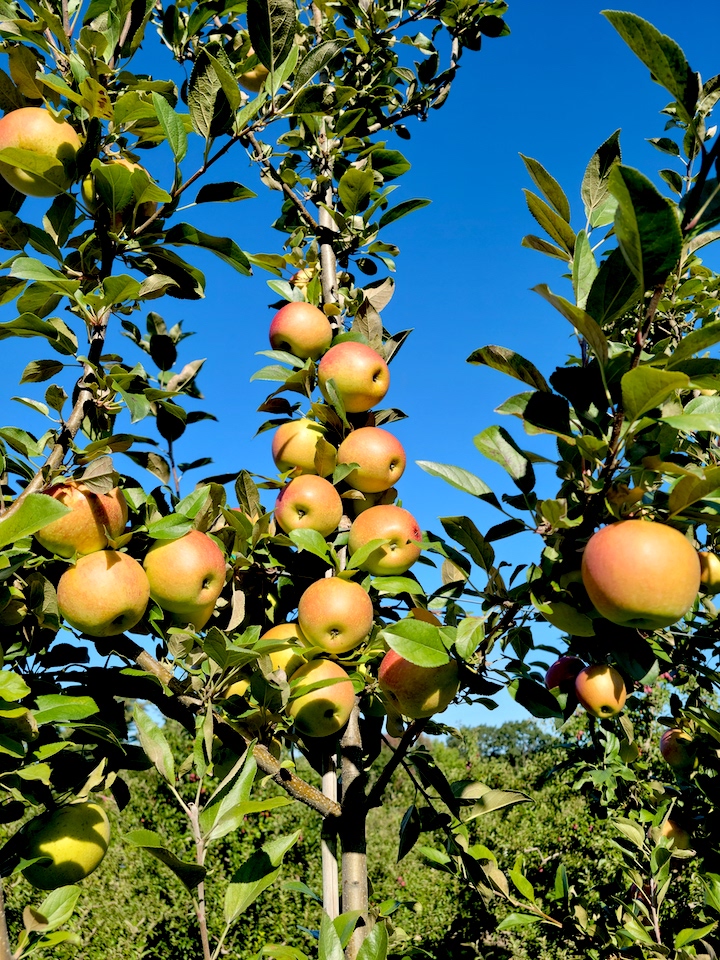

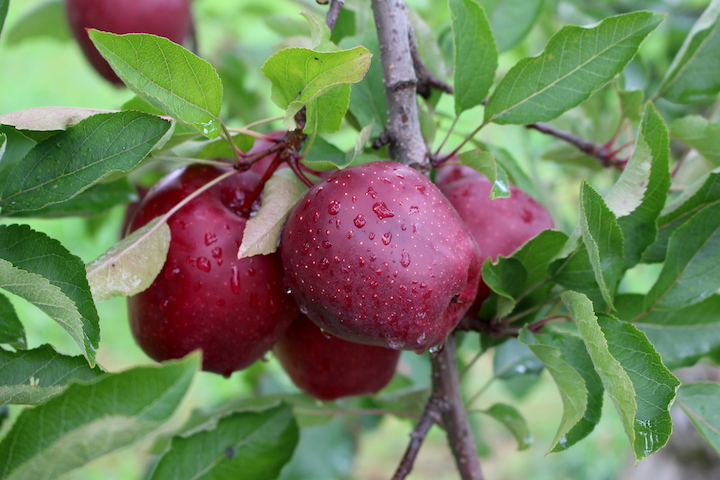
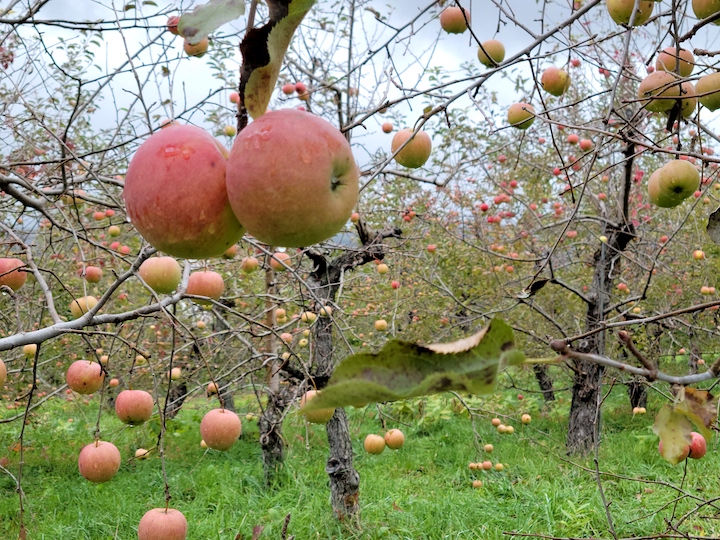

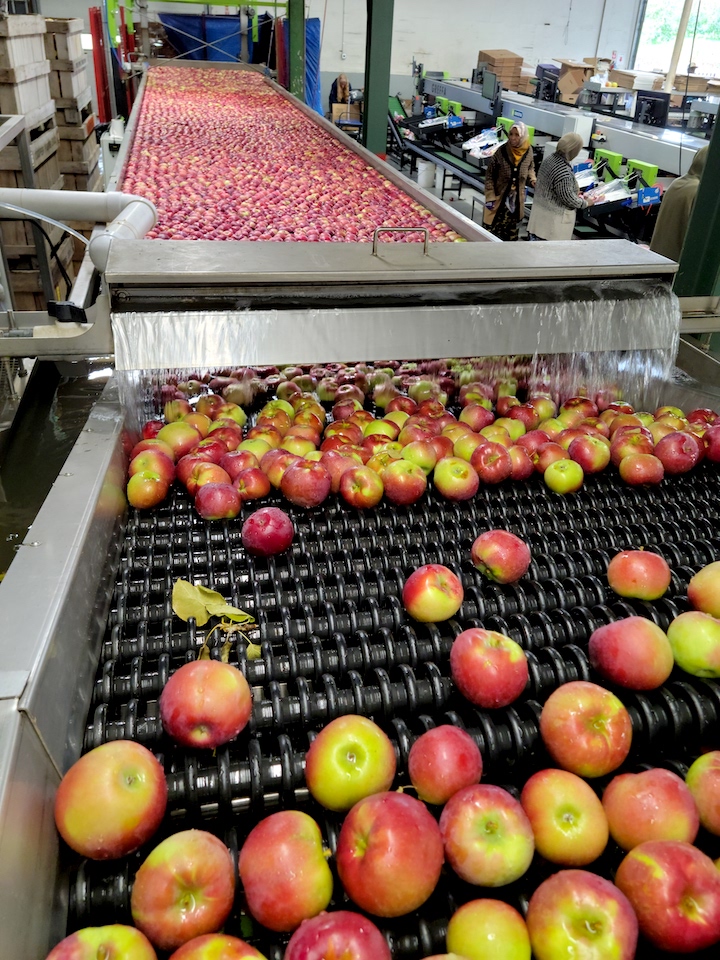
* * *
HERE’S ANOTHER WAY to make applesauce, flavored with vanilla and apricot preserves:
Apricot Applesauce
15-18 medium New England apples
1/2 c apple cider
1 c apricot preserves
2 T butter, melted
1 T lemon juice
1 t cinnamon
1 t vanilla (optional)
Core apples, cut into quarters.
In large, covered pot, place apples and cider, and cook on low heat for 20-30 minutes, until apples are soft, stirring occasionally.
Set a large food mill over a large bowl and strain apples.
Stir in remaining ingredients.
Cool before serving.
Adapted from Uncommon Gourmet by Ellen Helman